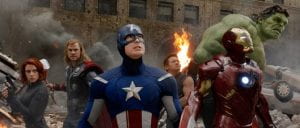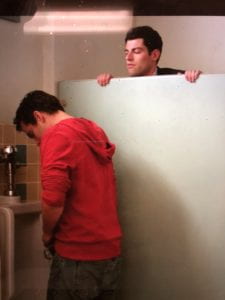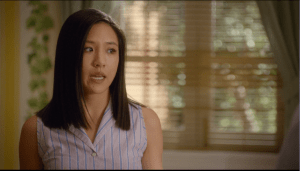Fresh Off the Boat has a fresh visual design. The colors are bright, the cuts are quick, and the color scheme is warm. This show is so wholesome that it even reflects in the visual design. The colors are warm schemed, reflecting the warmth of the show and the inviting characters as the series wants to display their family dynamic. This has the effect of carrying over the program’s lightheartedness. There are no gloomy days, dark scenes, or special effects in the show. It is very clean cut and looks bright and cheery even when nighttime scenes are shown.
fight like sisters, love like sisters
The show has mostly longer scenes, with a plotline falling over an average to long timeframe, but shots are quick and clean. Conversations between characters are shot with quick cuts between each perspective, ping-ponging between lines of dialogue. Every once in a while scenes are shot differently, like the opening of Episode 7, when the Huang’s are in a mock robbery scene. The opening of the showtimes special edits with riffs and music. The narration is paired with shots, especially when narrating the thoughts of multiple characters at a time, which the show does often. These long takes help the development of the show by allowing for longer jokes and humor with better punchlines and more drama between the characters. Scene 7 also shows a fantasy of Eddie Huang wanting to hit on his crush, who he is intimidated by, by showing her his music taste. In this scene, he gets up to walk back to her and enters a fantasy edit with backup dancers and an autotuned bus driver. More intimate scenes, like one on one conversations between the mom and dad, are shot closer up, leading you into the conversation as if you were there. If it weren’t shot this close, it would feel as though you are observing something private, and may lose engagement with viewers.

the way they look at each other <3
I find the intro of the show interesting cinematographically because it uses unique panning styles and zooms not used in the actual showtime. In the title sequence as well as most of Eddie’s scenes, the music is paired with the style of the shot. Zooms have riffs, sexy scenes have jazz, happy scenes have elevator music and Eddie’s got his 2pac. Is this show Straight Outta Compton or Straight Outta Suburbia?














